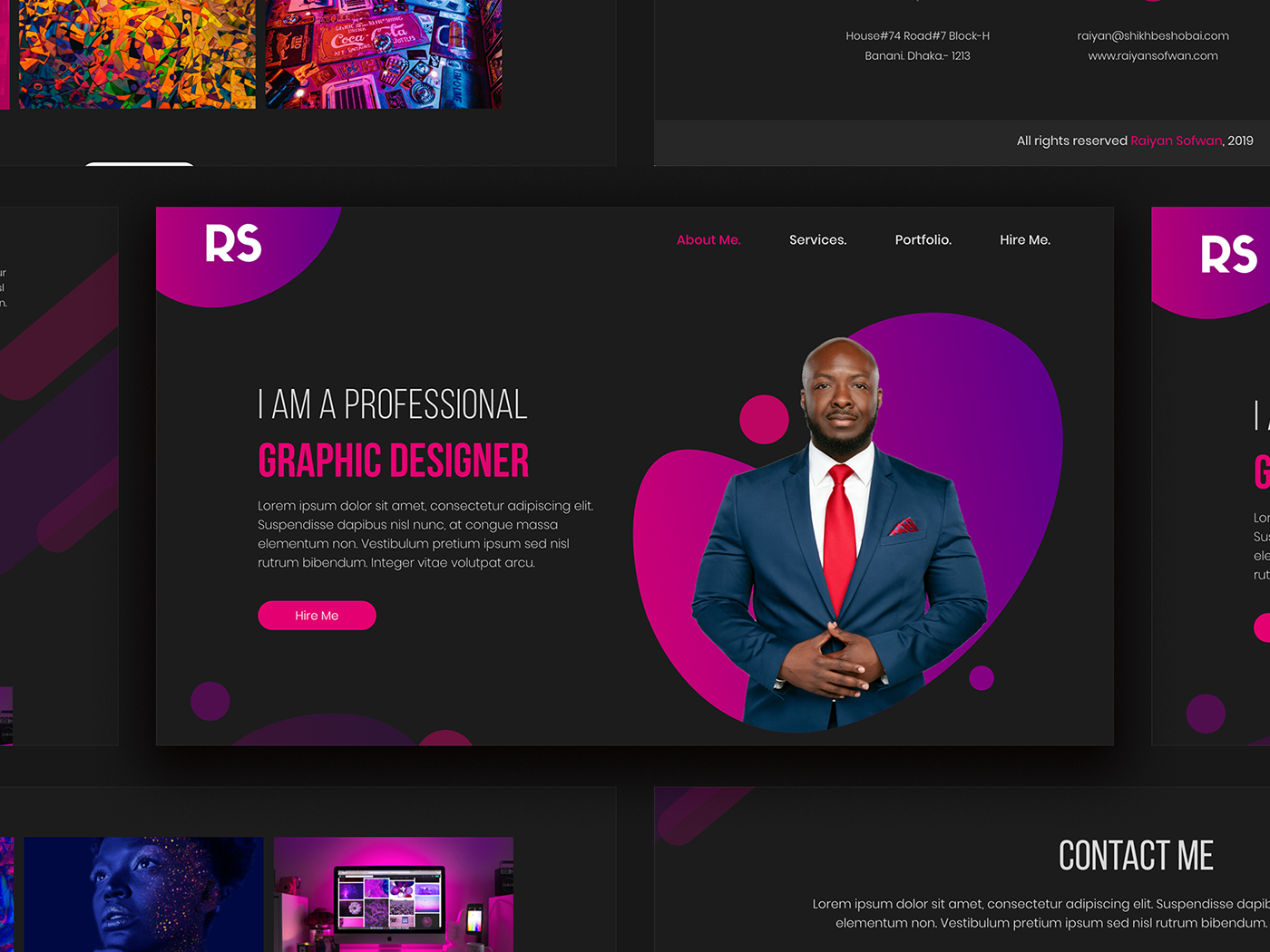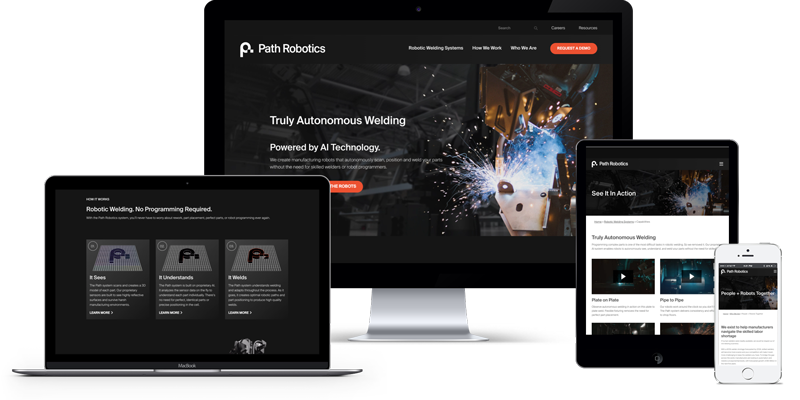The Future of Digital Marketing: Embracing Modern Website Design Trends
The Future of Digital Marketing: Embracing Modern Website Design Trends
Blog Article
Secret Methods for Executing User-Centric Website Style to Increase Engagement
When considering the execution of user-centric internet site design, certain strategies are important in enhancing engagement. Extensive research study into user demands and choices creates the foundation, guiding the production of individual identities to inform style choices. Customizing material boosts user fulfillment, and durable ease of access features expand reach.
Comprehending User Requirements
Comprehending individual demands is a basic step in the procedure of user-centric web site layout. This approach makes sure that the site aligns with the expectations and requirements of its target market, eventually resulting in improved user complete satisfaction and involvement. The initial phase entails performing complete research study to collect understandings right into individual actions, preferences, and pain points. Techniques such as studies, interviews, and user screening can provide beneficial qualitative and quantitative information regarding how individuals interact with the internet site.
Examining this information enables developers to produce thorough individual identities that stand for the different segments of the target audience. These identities assist notify layout decisions by highlighting details customer goals and obstacles, leading the growth of attributes that address these demands properly. Comprehending the context in which users run-- such as their atmosphere, tool preferences, and time restrictions-- can better refine the layout approach.
Empathy plays a critical function in this process, making it possible for developers to see the web site from the individual's point of view. By prioritizing customer requirements, the design procedure comes to be a lot more concentrated, stopping the incorporation of unneeded elements that can mess the individual experience. Inevitably, a deep understanding of customer demands contributes in crafting an internet site that is both meaningful and useful.
Designing User-friendly Navigating
Having actually developed a thorough understanding of individual requirements, the next action in user-centric website layout includes creating intuitive navigating. Reliable navigation is essential to individual complete satisfaction, influencing how conveniently customers can discover information and complete tasks. To achieve instinctive navigation, designers must focus on simplicity and clearness, ensuring that the navigating framework is rational and consistent throughout the website.
Organizing material right into a clear power structure is crucial. Website Design. Making use of acquainted labels and icons can assist customers effortlessly, decreasing cognitive load and improving the total individual experience. A properly designed navigation bar ought to be plainly placed, allowing users to determine their current area and quickly check out other sections of the website
It is also vital to integrate interactive aspects such as breadcrumbs and search functionalities to help users in browsing complicated websites. These functions provide additional pathways and boost the ease of access of web content, accommodating numerous individual preferences and actions.
Evaluating navigation with actual customers is essential to determine possible pain points and guarantee functionality straightens with individual assumptions. Normal responses loopholes and iterative renovations can assist keep an effective navigating system that adjusts to evolving user needs, ultimately boosting engagement and satisfaction.
Developing Receptive Interfaces
Invariably, developing receptive user interfaces is a critical facet of contemporary internet design, ensuring that internet sites are useful and available across a plethora of devices and display sizes (Website Design). This adaptability is vital in a landscape where customers gain access to content via smart devices, laptops, tablet computers, and desktop computers, each with varying positionings and resolutions. The key goal of receptive style is to boost individual experience by maintaining optimum readability and usability, despite the device made use of
To accomplish this, web designers use flexible grid formats, liquid images, and CSS media inquiries. Flexible grids permit web site elements to resize proportionally, while fluid images guarantee visuals scale properly without shedding quality. Media queries play a crucial duty by applying various designs based upon the gadget's characteristics, such as width, elevation, and alignment, thus customizing the design to the customer's display.
Moreover, receptive interfaces contribute to boosted seo (SEO) by using a seamless customer experience, which consequently can decrease bounce rates and boost website engagement. In recap, taking on responsive style is not merely a technical consideration however a crucial strategy for promoting a user-centric internet setting that meets the needs of a diverse target market.

Customizing Material Experience
Individualizing material experience is a crucial component of user-centric website layout that entails customizing content to satisfy the one-of-a-kind choices and behaviors of specific customers. This strategy not only improves user satisfaction yet additionally promotes much deeper involvement, as site visitors are much more likely to communicate with web content that resonates with their rate of interests and demands. By leveraging information analytics and user comments, companies can recognize patterns and patterns that educate the modification of internet content.
Incorporating personalization strategies can range from straightforward adjustments, such as advising products based on browsing background, to a lot more advanced methods like dynamic web content that adjusts in real-time to a user's communications. For instance, personalized touchdown web pages can dramatically raise conversion prices by supplying customers with appropriate information and uses that straighten with their previous activities and choices.
Moreover, utilizing synthetic knowledge and maker learning can you could try here further refine content their explanation personalization by constantly picking up from customer behaviors and adapting to arising patterns. This not just improves the individual's trip yet additionally builds brand commitment, as consumers really feel comprehended and valued. Eventually, personalizing the web content experience is an important strategy for services aiming to develop an extra significant and interesting interaction with their target market.
Enhancing Availability Attributes
Enhancing accessibility functions is a fundamental aspect of user-centric web site layout, making sure that electronic content is useful by everyone, consisting of people with handicaps. This method not just abides by legal standards such as the Americans with Disabilities Act (ADA) and the Internet Web Content Availability Guidelines (WCAG) however additionally substantially widens a site's target market reach. By integrating functions like key-board navigating, display visitor compatibility, and different text for photos, sites become more inclusive, giving a seamless experience for individuals with visual, acoustic, or electric motor problems.
Incorporating responsive design elements is important, assisting in access on various tools and screen dimensions, therefore suiting users with various preferences and needs. Contrast proportions and message dimension changes can improve readability for people with aesthetic obstacles. Providing clear and succinct material framework, such as headings and listings, aids understanding and navigating, specifically for individuals with cognitive specials needs.
Regular accessibility audits ought to be conducted to identify and rectify possible barriers, ensuring continued compliance and use. By focusing on ease of access, companies not just foster inclusivity but also enhance general user engagement and fulfillment, eventually driving greater conversion rates and reinforcing brand commitment.

Conclusion
Integrating user-centric style techniques considerably enhances web site interaction by focusing on the requirements and choices of users. Thorough research facilitates the production of user personas, directing targeted style decisions. Intuitive navigating and receptive user interfaces boost usability and accessibility across devices. Personalizing web content based upon user actions increases complete satisfaction, while robust accessibility attributes expand target market reach. Collectively, these strategies produce a purposeful on the internet experience, cultivating much deeper involvement and communication with the internet site.
Complete research into individual demands and preferences creates the structure, assisting the production of customer characters to educate layout options. Strategies such as surveys, interviews, and individual testing can offer beneficial qualitative and measurable information concerning how individuals interact with the web site.
By focusing on user requirements, the design procedure ends up being much more focused, protecting against the incorporation of why not try this out unnecessary components that might clutter the user experience. Reliable navigation is essential to customer complete satisfaction, influencing just how easily users can locate info and full jobs. The usage of acquainted labels and symbols can lead individuals effortlessly, minimizing cognitive lots and boosting the overall user experience.
Report this page